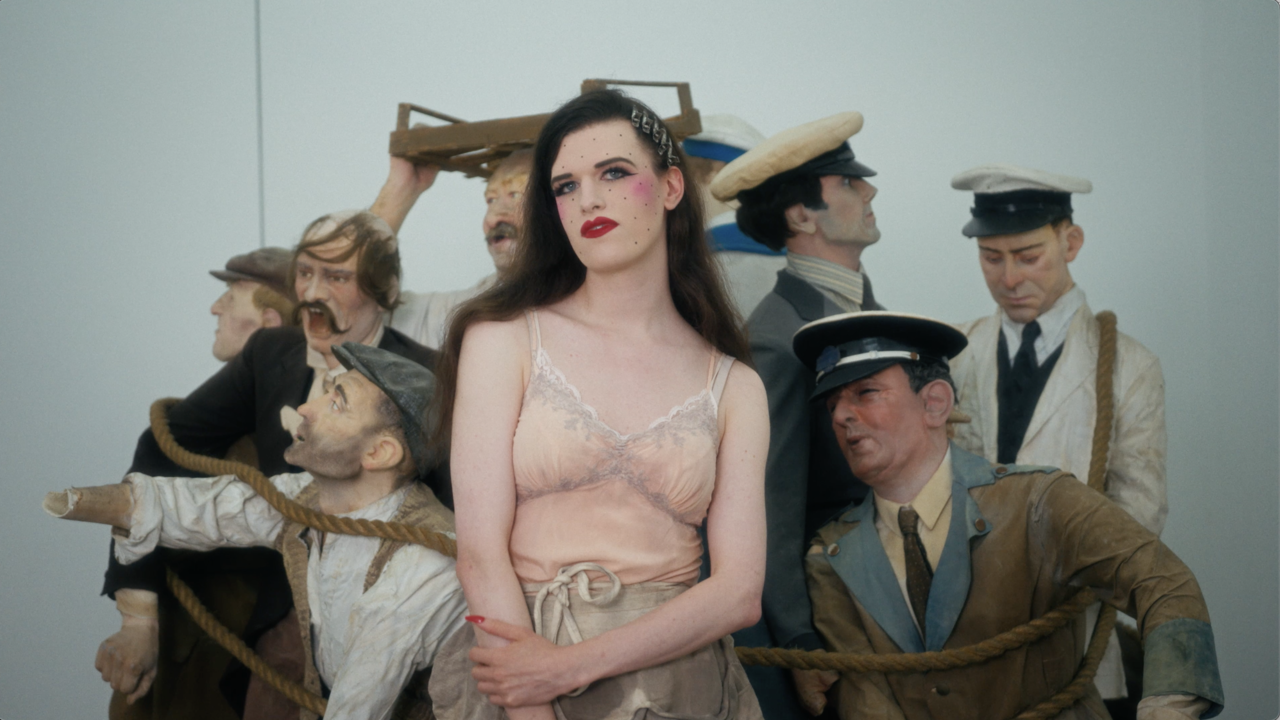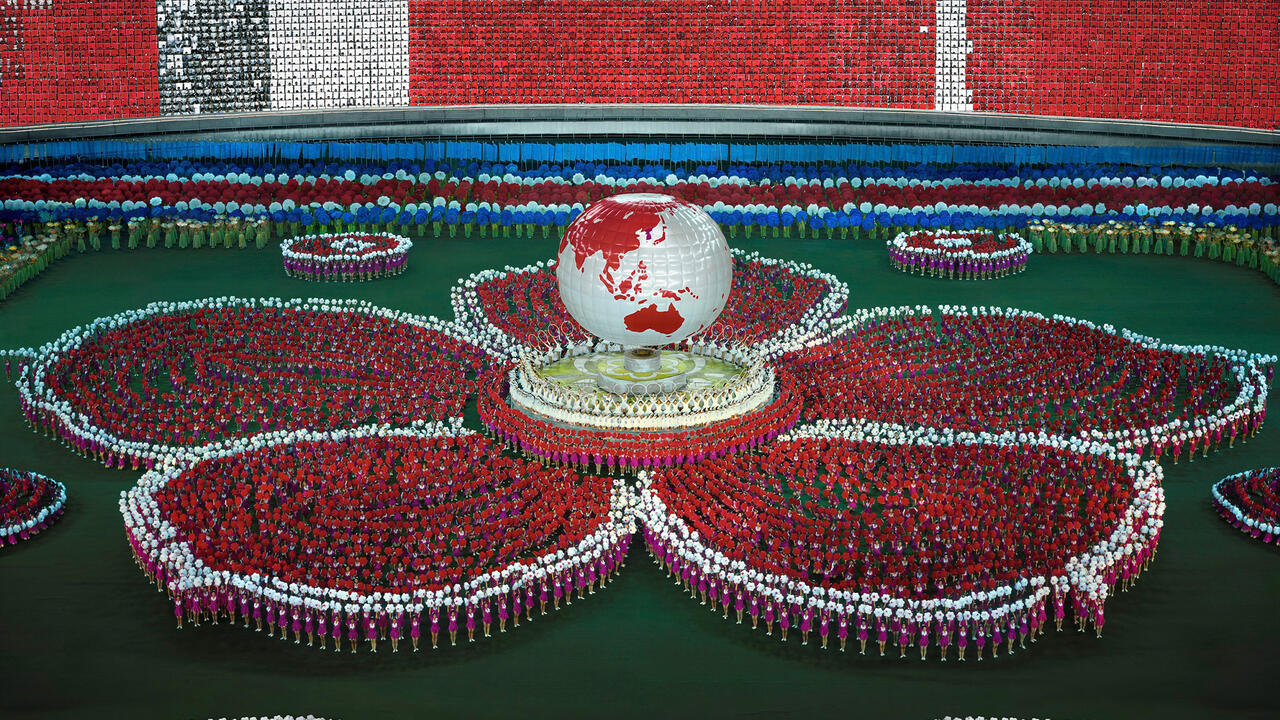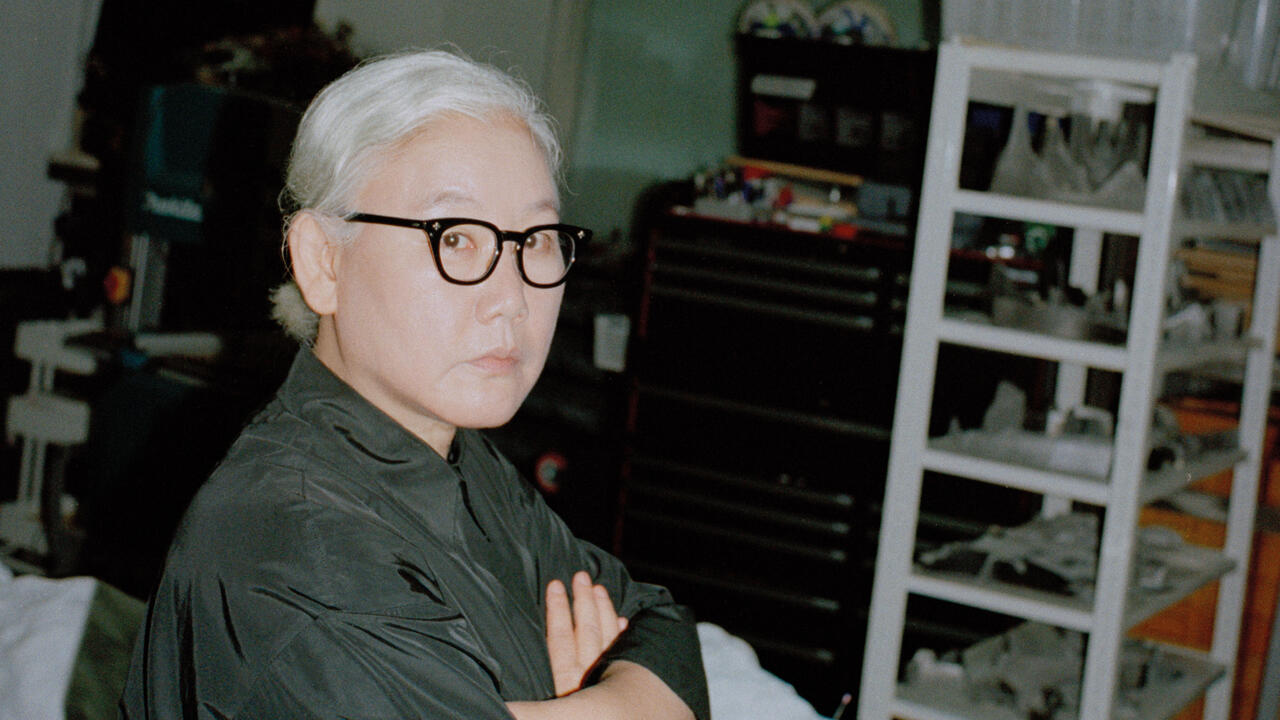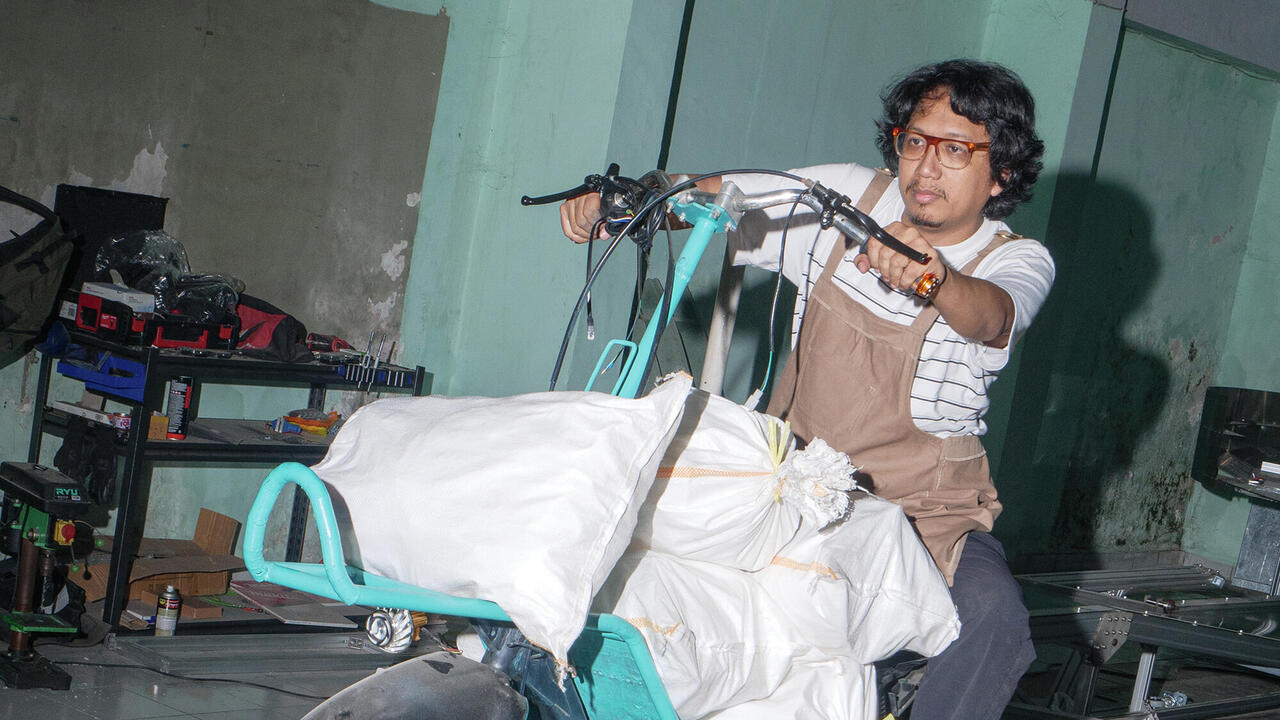Eva Kotátková
Imposition, discipline and confinement; wooden tunnels, metal corsets and classrooms
Imposition, discipline and confinement; wooden tunnels, metal corsets and classrooms

Some years ago, Czech artist Eva Kotátková moved into her late grandmother’s small apartment in Prague, which had originally been fitted out during the shortage-plagued socialist era. The dreary furnishings left the artist feeling despondent, so she decided that everything in the flat should go. Eventually, nothing was left other than the walls and Kotátková herself. Capturing her actions in four short films, the artist used boards to wall herself into a corner and installed a false floor with narrow openings in it to create a cave-like space in which she could dwell. In the resulting works, space is obstructed and the body’s scope for movement is limited by partitions. ‘It’s rules and conventions that hold us prisoner,’ says Kotátková, ‘I wanted to render that visible.’ And tangible. When she first showed these works – which are collectively titled Behind Between Over Under In (the Room) – in her 2007 exhibition ‘Using Own Language’ at Galerie Jeleni in Prague, she built a tunnel that became the entrance to the exhibition: anyone who wished to see the films had to squeeze through this wobbly, stilted construction.
Having tackled her own four walls, Kotátková – who studied at Prague’s Academy of Fine Arts under Jirí Kovanda – decided to shift her practice outside. For most children, the route they walk to school is the first they take on their own. For her series ‘Walk to School’ (2008), Kotátková tracked down her old school uniform, made herself a replica satchel out of wood and – recorded by the camera – strolled once more along her route to school. Stopping just short of her destination, she then buried herself into the ground up to her knees. Passing children became curious and some of them imitated her act of self-burial. Kotátková presented the film, the wooden satchel and the jacket from her schooldays – draped onto a scarecrow-like figure – in an exhibition at Galerie Vaclav Spala, Prague. The route she had taken was mapped out on the floor and the work’s preliminary drawings were presented as illustrations in schoolbooks – a feature of all her subsequent exhibitions. Four other films were also shown as part of the series showing children in their classrooms, stuck in odd wooden frames, sitting with hands behind their backs or lying on their desks. The structures that contain them are worryingly tight, alluding to brutal attempts to control children and the lifelong conflict between imposed discipline and the body’s striving for movement, light, air and knowledge.

By retracing her own route to school, Kotátková discovered what Jacques Rancière refers to in his book The Future of the Image (2007) as: ‘the educational value (the studium) of the document bearing the trace of a history.’ Following on from ‘Walk to School’, the artist again worked with children in Dictation (2009), asking them to make a list of the things they were most often told to do – sit up straight, do your homework, tidy your room – and then getting adults to write the expressions down in the first person: ‘I’m sitting up straight.’ In 2008, at Prague’s Karlin Studios, Kotátková reconstructed a schoolroom and invited 24 Prague-based artists to take turns at assuming the role of the teacher, with the audience acting as their pupils (Art Lessons).
Kotátková returned to her interest in bodily confinement to create the series ‘House Arrest’ (2009). In House Arrest no. 1, she stands against a wall, squeezed in between piles of books – in Kotátková’s work, hunger for knowledge is a heavy burden. In House Arrest no. 2, we see a figure encased upside-down in an oval corset of steel rods anchored in a hole cut out of a small wooden table. Another of her steel-rod frameworks, House Arrest no. 4, which can accommodate seven open books, straps onto the body. Like a medieval instrument of torture, the work embodies Rancière’s reference to ‘the capacity to exhibit signs written on a body, the marks directly imprinted by its history, which are more truthful than any discourse proffered by a mouth.’
Kotátková’s most recent exhibition, ‘Controlled Memory Loss’, at Hunt Kastner Artworks, Prague, early this year, saw the artist break out of her confinement. In Exercise no. 4 – a performance again captured on film – the furnishings of an entire apartment are moved out into a snow-covered garden. In Exercise no. 2, three people with blindfolds reconstruct the floor plan of her apartment in cardboard while Kotátková herself begins an exchange with her neighbour – who she had never talked to – in the apartment next door. Their ‘conversation’ is conducted by exchanging notes – and the audience are left wondering whether they will ever eventually meet. Given that Kotátková’s self-imposed immurement has generated such intriguing actions and objects, perhaps we should hope not.
Translated by Nicholas Grindell























